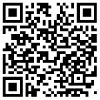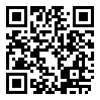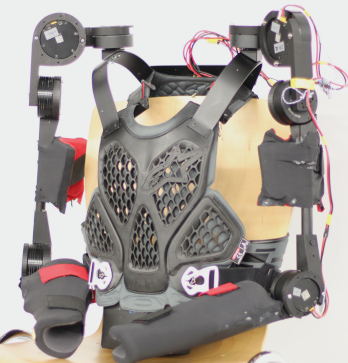
Lehrgebiet: Theoretische Informatik und künstliche Intelligenz
Büro: 01.214
Labor: 04.105
Telefon: +49 208 88254-806
E-Mail:
🛜 http://lab.iossifidis.net

Ioannis Iossifidis studierte Physik (Schwerpunkt: theoretische Teilchenphysik) an der Universität Dortmund und promovierte 2006 an der Fakultät für Physik und Astronomie der Ruhr-Universität Bochum.
Am Institut für Neuroinformatik leitete Prof. Dr. Iossifidis die Arbeitsgruppe Autonome Robotik und nahm mit seiner Forschungsgruppe erfolgreich an zahlreichen, vom BmBF und der EU, geförderten Forschungsprojekten aus dem Bereich der künstlichen Intelligenz teil. Seit dem 1. Oktober 2010 arbeitet er an der HRW am Institut Informatik und hält den Lehrstuhl für Theoretische Informatik – Künstliche Intelligenz.
Prof. Dr. Ioannis Iossifidis entwickelt seit über 20 Jahren biologisch inspirierte anthropomorphe, autonome Robotersysteme, die zugleich Teil und Ergebnis seiner Forschung im Bereich der rechnergestützten Neurowissenschaften sind. In diesem Rahmen entwickelte er Modelle zur Informationsverarbeitung im menschlichen Gehirn und wendete diese auf technische Systeme an.
Ausgewiesene Schwerpunkte seiner wissenschaftlichen Arbeit der letzten Jahre sind die Modellierung menschlicher Armbewegungen, der Entwurf von sogenannten «Simulierten Realitäten» zur Simulation und Evaluation der Interaktionen zwischen Mensch, Maschine und Umwelt sowie die Entwicklung von kortikalen exoprothetischen Komponenten. Entwicklung der Theorie und Anwendung von Algorithmen des maschinellen Lernens auf Basis tiefer neuronaler Architekturen bilden das Querschnittsthema seiner Forschung.
Ioannis Iossifidis’ Forschung wurde u.a. mit Fördermitteln im Rahmen großer Förderprojekte des BmBF (NEUROS, MORPHA, LOKI, DESIRE, Bernstein Fokus: Neuronale Grundlagen des Lernens etc.), der DFG («Motor‐parietal cortical neuroprosthesis with somatosensory feedback for restoring hand and arm functions in tetraplegic patients») und der EU (Neural Dynamics – EU (STREP), EUCogII, EUCogIII ) honoriert und gehört zu den Gewinnern der Leitmarktwettbewerbe Gesundheit.NRW und IKT.NRW 2019.
ARBEITS- UND FORSCHUNGSSCHWERPUNKTE
- Computational Neuroscience
- Brain Computer Interfaces
- Entwicklung kortikaler exoprothetischer Komponenten
- Theorie neuronaler Netze
- Modellierung menschlicher Armbewegungen
- Simulierte Realität
WISSENSCHAFTLICHE EINRICHTUNGEN
- Labor mit Verlinkung
- ???
- ???
LEHRVERANSTALTUNGEN
- ???
- ???
- ???
PROJEKTE
- Projekt mit Verlinkung
- ???
- ???
WISSENSCHAFTLICHE MITARBEITER*INNEN

Felix Grün
Büro: 02.216 (Campus Bottrop)

Marie Schmidt
Büro: 02.216 (Campus Bottrop)

Aline Xavier Fidencio
Gastwissenschaftlerin

Muhammad Ayaz Hussain
Doktorand

Tim Sziburis
Doktorand

Farhad Rahmat
studentische Hilfskraft
GOOGLE SCHOLAR PROFIL

Artikel

Hussain, Muhammad Ayaz; Iossifidis, Ioannis
In: arXiv:2309.04698 [cs.RO], 2023.
Abstract | Links | BibTeX | Schlagwörter: BCI, Computer Science - Artificial Intelligence, Computer Science - Information Theory, Computer Science - Machine Learning, Exoskeleton, Robotics
@article{ayazhussainAdvancementsUpperBody2023,
title = {Advancements in Upper Body Exoskeleton: Implementing Active Gravity Compensation with a Feedforward Controller},
author = {Muhammad Ayaz Hussain and Ioannis Iossifidis},
url = {https://doi.org/10.48550/arXiv.2309.04698},
doi = {10.48550/arXiv.2309.04698},
year = {2023},
date = {2023-09-09},
urldate = {2023-09-09},
journal = {arXiv:2309.04698 [cs.RO]},
abstract = {In this study, we present a feedforward control system designed for active gravity compensation on an upper body exoskeleton. The system utilizes only positional data from internal motor sensors to calculate torque, employing analytical control equations based on Newton-Euler Inverse Dynamics. Compared to feedback control systems, the feedforward approach offers several advantages. It eliminates the need for external torque sensors, resulting in reduced hardware complexity and weight. Moreover, the feedforward control exhibits a more proactive response, leading to enhanced performance. The exoskeleton used in the experiments is lightweight and comprises 4 Degrees of Freedom, closely mimicking human upper body kinematics and three-dimensional range of motion. We conducted tests on both hardware and simulations of the exoskeleton, demonstrating stable performance. The system maintained its position over an extended period, exhibiting minimal friction and avoiding undesired slewing.},
keywords = {BCI, Computer Science - Artificial Intelligence, Computer Science - Information Theory, Computer Science - Machine Learning, Exoskeleton, Robotics},
pubstate = {published},
tppubtype = {article}
}
Doliwa, Sebastian; Hussain, Muhammad Ayaz; Sziburis, Tim; Iossifidis, Ioannis
Biologically Inspired Model for Timed Motion in Robotic Systems Artikel
In: arXiv:2106.15864 [cs, math], 2021.
Abstract | BibTeX | Schlagwörter: attractor dynamics approach, Dynamical systems, Robotics
@article{doliwaBiologicallyInspiredModel2021,
title = {Biologically Inspired Model for Timed Motion in Robotic Systems},
author = {Sebastian Doliwa and Muhammad Ayaz Hussain and Tim Sziburis and Ioannis Iossifidis},
year = {2021},
date = {2021-07-01},
urldate = {2021-07-01},
journal = {arXiv:2106.15864 [cs, math]},
abstract = {The goal of this work is the development of a motion model for sequentially timed movement actions in robotic systems under specific consideration of temporal stabilization, that is maintaining an approximately constant overall movement time (isochronous behavior). This is demonstrated both in simulation and on a physical robotic system for the task of intercepting a moving target in three-dimensional space. Motivated from humanoid motion, timing plays a vital role to generate a naturalistic behavior in interaction with the dynamic environment as well as adaptively planning and executing action sequences on-line. In biological systems, many of the physiological and anatomical functions follow a particular level of periodicity and stabilization, which exhibit a certain extent of resilience against external disturbances. A main aspect thereof is stabilizing movement timing against limited perturbations. Especially human arm movement, namely when it is tasked to reach a certain goal point, pose or configuration, shows a stabilizing behavior. This work incorporates the utilization of an extended Kalman filter (EKF) which was implemented to predict the target position while coping with non-linear system dynamics. The periodicity and temporal stabilization in biological systems was artificially generated by a Hopf oscillator, yielding a sinusoidal velocity profile for smooth and repeatable motion.},
keywords = {attractor dynamics approach, Dynamical systems, Robotics},
pubstate = {published},
tppubtype = {article}
}
Zibner, S K U; Faubel, Christian; Iossifidis, Ioannis; Schöner, G
In: IEEE Transactions on Autonomous Mental Development, Bd. 3, Nr. 1, 2011, ISSN: 19430604.
Abstract | Links | BibTeX | Schlagwörter: dynamic field theory (DFT), Dynamical systems, embodied cognition, neural processing, Robotics
@article{Zibner2011,
title = {Dynamic neural fields as building blocks of a cortex-inspired architecture for robotic scene representation},
author = {S K U Zibner and Christian Faubel and Ioannis Iossifidis and G Schöner},
doi = {10.1109/TAMD.2011.2109714},
issn = {19430604},
year = {2011},
date = {2011-01-01},
urldate = {2011-01-01},
journal = {IEEE Transactions on Autonomous Mental Development},
volume = {3},
number = {1},
abstract = {Based on the concepts of dynamic field theory (DFT), we present an architecture that autonomously generates scene representations by controlling gaze and attention, creating visual objects in the foreground, tracking objects, reading them into working memory, and taking into account their visibility. At the core of this architecture are three-dimensional dynamic neural fields (DNFs) that link feature to spatial information. These three-dimensional fields couple into lower dimensional fields, which provide the links to the sensory surface and to the motor systems. We discuss how DNFs can be used as building blocks for cognitive architectures, characterize the critical bifurcations in DNFs, as well as the possible coupling structures among DNFs. In a series of robotic experiments, we demonstrate how the DNF architecture provides the core functionalities of a scene representation. textcopyright 2011 IEEE.},
keywords = {dynamic field theory (DFT), Dynamical systems, embodied cognition, neural processing, Robotics},
pubstate = {published},
tppubtype = {article}
}
Bücher
Iossifidis, Ioannis
Dynamische Systeme zur Steuerung anthropomorpher Roboterarme in autonomen Robotersystemen Buch
Logos Verlag Berlin, 2006.
Abstract | Links | BibTeX | Schlagwörter: Dynamical systems, inverse kinematics, Robotics
@book{Iossifidis2006b,
title = {Dynamische Systeme zur Steuerung anthropomorpher Roboterarme in autonomen Robotersystemen},
author = {Ioannis Iossifidis},
url = {http://www.logos-verlag.de/cgi-bin/engbuchmid?isbn=1305&lng=deu&id=},
year = {2006},
date = {2006-08-01},
urldate = {2006-08-01},
number = {ISBN: 3-8325-1305-1},
pages = {160},
publisher = {Logos Verlag Berlin},
abstract = {Das übergeordnete Forschungsgebiet, in das sich die vorliegende Arbeit einbettet, befasst sich mit der Erforschung von informationsverabeitenden Prozessen im Gehirn und der Anwendung der resultierenden Erkenntnisse auf technische Systeme.
In Analogie zu biologischen Systemen, deren Beschaffenheit aus den Anforderungen der Umwelt an ihr Verhalten resultiert, leitet sich die Anthropomorphie als Entwurfsprinzip für die Struktur des mit den Menschen interagierenden robotischen Assistenzsystemen ab.
Der Autor behandelt in der vorliegende Arbeit das Problem der Erzeugung von Motorverhalten im dreidimensionalen Raum am Beispiel eines anthropomorphen Roboterarmes in einem anthropomorphen robotischen Assistenzsystem.
Entwickelt wurde hierbei ein allgemeiner Ansatz, der die Konzepte der Erzeugung von Motorverhalten im 3D-Raum, der Voraussimulation dynamischer Systeme zur Systemdiagnose und zur Suche gewünschter Systemzustände, sowie ein Konzept der Organisation von Verhalten enthält und vereinigt.
Nichtlineare dynamische Systeme bilden das mathematische Fundament, die einheitlich, formale Sprache des Ansatzes, mit der sowohl das Motorverhalten des Roboters als auch dessen zeitkontinuierliche Teilsysteme rückgekoppelt werden.},
keywords = {Dynamical systems, inverse kinematics, Robotics},
pubstate = {published},
tppubtype = {book}
}
In Analogie zu biologischen Systemen, deren Beschaffenheit aus den Anforderungen der Umwelt an ihr Verhalten resultiert, leitet sich die Anthropomorphie als Entwurfsprinzip für die Struktur des mit den Menschen interagierenden robotischen Assistenzsystemen ab.
Der Autor behandelt in der vorliegende Arbeit das Problem der Erzeugung von Motorverhalten im dreidimensionalen Raum am Beispiel eines anthropomorphen Roboterarmes in einem anthropomorphen robotischen Assistenzsystem.
Entwickelt wurde hierbei ein allgemeiner Ansatz, der die Konzepte der Erzeugung von Motorverhalten im 3D-Raum, der Voraussimulation dynamischer Systeme zur Systemdiagnose und zur Suche gewünschter Systemzustände, sowie ein Konzept der Organisation von Verhalten enthält und vereinigt.
Nichtlineare dynamische Systeme bilden das mathematische Fundament, die einheitlich, formale Sprache des Ansatzes, mit der sowohl das Motorverhalten des Roboters als auch dessen zeitkontinuierliche Teilsysteme rückgekoppelt werden.
Iossifidis, Ioannis; Steinhage, A
Behavior generation for Anthropomorphic robots by means of dynamical systems Buch
2005, ISSN: 16107438.
Abstract | BibTeX | Schlagwörter: arm movement model, behavior generation, Dynamical systems, movement model, Robotics
@book{Iossifidis2005c,
title = {Behavior generation for Anthropomorphic robots by means of dynamical systems},
author = {Ioannis Iossifidis and A Steinhage},
issn = {16107438},
year = {2005},
date = {2005-01-01},
urldate = {2005-01-01},
booktitle = {Springer Tracts in Advanced Robotics},
volume = {14},
abstract = {This article describes the current state of our research on anthropomorphic robots. Our aim is to make the reader familiar with the two basic principles our work is based on: anthropomorphism and dynamics. The principle of anthropomorphism means a restriction to human-like robots which use version, audition and touch as their only sensors so that natural man-machine interaction is possible. The principle of dynamics stands for the mathematical framework based on which our robots generate their behavior. Both principles have their root in the idea that concepts of biological behavior and information processing can be exploited to control technical systems. textcopyright Springer-Verlag Berlin Heidelberg 2005.},
keywords = {arm movement model, behavior generation, Dynamical systems, movement model, Robotics},
pubstate = {published},
tppubtype = {book}
}
Iossifidis, Ioannis; Bruckhoff, Carsten; Theis, C; Grote, Claudia; Faubel, Christian; Schöner, G
A cooperative robotic assistant for human environments Buch
2005, ISSN: 16107438.
Abstract | BibTeX | Schlagwörter: direct physical interaction, haptic interface, human robot collaboration, man machine interaction, Robotics
@book{Iossifidis2005a,
title = {A cooperative robotic assistant for human environments},
author = {Ioannis Iossifidis and Carsten Bruckhoff and C Theis and Claudia Grote and Christian Faubel and G Schöner},
issn = {16107438},
year = {2005},
date = {2005-01-01},
urldate = {2005-01-01},
booktitle = {Springer Tracts in Advanced Robotics},
volume = {14},
abstract = {CoRA is a robotic assistant whose task is to collaborate with a human operator on simple manipulation or handling tasks. Its sensory channels comprising vision, audition, haptics, and force sensing are used to extract perceptual information about speech, gestures and gaze of the operator, and object recognition. The anthropomorphic robot arm makes goal-directed movements to pick up and hand-over objects. The human operator may mechanically interact with the arm by pushing it away (haptics) or by taking an object out of the robot's gripper (force sensing). The design objective has been to exploit the human operator's intuition by modeling the mechanical structure, the senses, and the behaviors of the assistant on human anatomy, human perception, and human motor behavior. textcopyright Springer-Verlag Berlin Heidelberg 2005.},
keywords = {direct physical interaction, haptic interface, human robot collaboration, man machine interaction, Robotics},
pubstate = {published},
tppubtype = {book}
}
Prassler, Erwin; Lawitzky, Gisbert; Stopp, Andreas; Grunwald, Gerhard; Hägele, Martin; Dillmann, Rüdiger; Iossifidis, Ioannis
Advances in Human Robot Interaction (Springer Tracts in Advanced Robotics) Buch
Springer, 2004, ISBN: 3540232117.
Links | BibTeX | Schlagwörter: arm movement model, behavior generation, Dynamical systems, inverse kinematics, movement model, redundant robot arm, Robotics
@book{Prassler2004c,
title = {Advances in Human Robot Interaction (Springer Tracts in Advanced Robotics)},
author = {Erwin Prassler and Gisbert Lawitzky and Andreas Stopp and Gerhard Grunwald and Martin Hägele and Rüdiger Dillmann and Ioannis Iossifidis},
url = {http://www.amazon.co.uk/Advances-Interaction-Springer-Advanced-Robotics/dp/3540232117},
isbn = {3540232117},
year = {2004},
date = {2004-01-01},
pages = {414},
publisher = {Springer},
keywords = {arm movement model, behavior generation, Dynamical systems, inverse kinematics, movement model, redundant robot arm, Robotics},
pubstate = {published},
tppubtype = {book}
}
Prassler, Erwin; Lawitzky, Gisbert; Stopp, Andreas; Grunwald, Gerhard; Hägele, Martin; Dillmann, Rüdiger; Iossifidis, Ioannis
Advances in Human Robot Interaction Buch
Springer Press, 2004.
Abstract | Links | BibTeX | Schlagwörter: arm movement model, behavior generation, Dynamical systems, inverse kinematics, movement model, redundant robot arm, Robotics
@book{Prassler2004b,
title = {Advances in Human Robot Interaction},
author = {Erwin Prassler and Gisbert Lawitzky and Andreas Stopp and Gerhard Grunwald and Martin Hägele and Rüdiger Dillmann and Ioannis Iossifidis},
editor = {Erwin Prassler and Gisbert Lawitzky and Andreas Stopp and Gerhard Grunwald and Martin Hägele and Rüdiger Dillmann and Ioannis Iossifidis},
url = {http://www.springeronline.com/sgw/cda/frontpage/0,11855,5-102-22-35029562-0,00.html?changeHeader=true},
year = {2004},
date = {2004-01-01},
booktitle = {Advances in Human Robot Interaction},
volume = {14/2004},
pages = {414},
publisher = {Springer Press},
series = {Springer Tracts in Advanced Robotics STAR},
abstract = {Human Robot Interaction and Cooperation Motion Coordination Multi-Modal Robot Interfaces Physical Interaction between Humans and Robots Robot Learning Visual Instruction of Robots},
keywords = {arm movement model, behavior generation, Dynamical systems, inverse kinematics, movement model, redundant robot arm, Robotics},
pubstate = {published},
tppubtype = {book}
}
Prassler, Erwin; Lawitzky, Gisbert; Stopp, Andreas; Grunwald, Gerhard; Ħägele, Martin; Đillmann, Rüdiger; Iossifidis, Ioannis
Advances in Ħuman Robot Interaction Buch
Springer Press, 2004.
Abstract | Links | BibTeX | Schlagwörter: arm movement model, behavior generation, Dynamical systems, movement model, Robotics
@book{Prassler2004,
title = {Advances in Ħuman Robot Interaction},
author = {Erwin Prassler and Gisbert Lawitzky and Andreas Stopp and Gerhard Grunwald and Martin Ħägele and Rüdiger Đillmann and Ioannis Iossifidis},
editor = {Erwin Prassler and Gisbert Lawitzky and Andreas Stopp and Gerhard Grunwald and Martin Ħägele and Rüdiger Đillmann and Ioannis Iossifidis},
url = {http://www.springeronline.com/sgw/cda/frontpage/0,11855,5-102-22-35029562-0,00.html?changeHeader=true},
year = {2004},
date = {2004-01-01},
booktitle = {Advances in Ħuman Robot Interaction},
volume = {14/2004},
number = {ISBN: 3-540-23211-7},
pages = {414},
publisher = {Springer Press},
series = {Springer Tracts in Advanced Robotics STAR},
abstract = {Human Robot Interaction and Cooperation
Motion Coordination
Multi-Modal Robot Interfaces
Physical Interaction between Humans and Robots
Robot Learning
Visual Instruction of Robots},
keywords = {arm movement model, behavior generation, Dynamical systems, movement model, Robotics},
pubstate = {published},
tppubtype = {book}
}
Motion Coordination
Multi-Modal Robot Interfaces
Physical Interaction between Humans and Robots
Robot Learning
Visual Instruction of Robots
Konferenzen
Klaes, Christian; Iossifidis, Ioannis
Low dimensional representation of human arm movement for efficient neuroprosthetic control by individuals with tetraplegia Konferenz
SfN Meeting 2017, 2017.
BibTeX | Schlagwörter: BCI, Dynamical systems, movement model, neuroprosthetic, Robotics
@conference{nokey,
title = {Low dimensional representation of human arm movement for efficient neuroprosthetic control by individuals with tetraplegia},
author = {Christian Klaes and Ioannis Iossifidis},
year = {2017},
date = {2017-01-01},
urldate = {2017-01-01},
booktitle = {SfN Meeting 2017},
keywords = {BCI, Dynamical systems, movement model, neuroprosthetic, Robotics},
pubstate = {published},
tppubtype = {conference}
}
